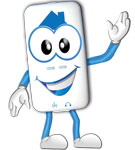IM and Other Treatment Modalities
We sometimes get asked about how IM works with other treatment modalities – and while each situation is unique, our Clinical Education Director, Amy Vega sheds some light on IM and the DORE Program.
We sometimes get asked about how IM works with other treatment modalities – and while each situation is unique, our Clinical Education Director, Amy Vega sheds some light on IM and the DORE Program.
With the new year upon us, children have a lot going on. Between new classes, new teachers and cold, wet weather, the last thing any child needs is a cluttered play area. How frustrating! Check out these tips from Wendy Harron, IM Provider and a wonderful OT!
Homework doesn’t have to be a bad experience. Sure, children can lose motivation at times, especially after a long day at school. Wendy Harron, an awesome OT and IM Provider, is back with some tips to keep kids’ on track and heading for success with homework. Check out her great tips on getting kids to stay still, stay focused and stay healthy.
Have you ever working with a client that had more than one diagnosis? Of course, often ADHD and autism, autism and SPD, ADHD and CP, etc. are present in children with developmental delays. So, how can Interactive Metronome help take training to the next level no matter what the diagnosis? Wendy Harron, an awesome OT and IM Provider, has the answers. Read more to find out how to work with cormorbid diagnoses.
This month is National Parks and Recreation Month, which is a great reminder to get outside and enjoy all of the wonderful learning activities that await children in the great outdoors. You don’t have to be Leslie Knope to love parks, but we could take a page from her playbook. So put on some tennis shoes, get the kids packed up and let’s go get some sun!
Motivating pre-teens is a unique challenge. They may be too young to be fully motivated internally, which requires some sort of reward system. The trick is finding a system that is engaging and motivating for kids without breaking the bank, or teaching children that they will always be paid to complete training.
Developmental disabilities affect nearly 14% of the population, and that is a big deal to us here at Interactive Metronome ® (IM). We want everyone to reach their fullest potential, whether it is in the classroom, board room or on the field. It’s that TIME of the year. Get moving this spring with IM.
Self awareness impacts so much of our daily life. Awareness of where we are in space has a huge impact on safety. Awareness of other people around us impacts development of our social skills. Awareness of how we maintain our body impacts development of self care skills.
 Every few weeks, I have a new batch of kids who will be receiving IM during their occupational therapy sessions. This also means there is a whole new batch of parents who like to know what exactly it is that their kids are doing and working on. I always refer them to www.interactivemetronome.com as well as having them search Interactive Metronome on youtube so they and their children will get some idea of the specialized treatment that their child will receive over the next few weeks. So hopefully the terminology listed below will help you get a better understanding as a parent when your child comes running out to you from their session saying something like “I got 15 bursts today and my task average was 65!”
Every few weeks, I have a new batch of kids who will be receiving IM during their occupational therapy sessions. This also means there is a whole new batch of parents who like to know what exactly it is that their kids are doing and working on. I always refer them to www.interactivemetronome.com as well as having them search Interactive Metronome on youtube so they and their children will get some idea of the specialized treatment that their child will receive over the next few weeks. So hopefully the terminology listed below will help you get a better understanding as a parent when your child comes running out to you from their session saying something like “I got 15 bursts today and my task average was 65!”
 I have many parents ask me right away – “How long until we see some improvement?” or “What should I look for?” In my experience, this is very unpredictable. Some of the patients who I see who I think will do really well, take much longer to show improvements and others who have more difficulty make progress more quickly. But it also sometimes happens in the opposite way.
I have many parents ask me right away – “How long until we see some improvement?” or “What should I look for?” In my experience, this is very unpredictable. Some of the patients who I see who I think will do really well, take much longer to show improvements and others who have more difficulty make progress more quickly. But it also sometimes happens in the opposite way.
Sometimes the children who have the most difficulty have the furthest to go – so improvement may seem to come more quickly. Sometimes its easier to see even the littlest thing – like they were able to feed themselves an entire meal instead of throwing their food or spoon – are much more obvious. In other situations, especially with my patients who have more of the ADHD/ADD type symptoms we need to look more closely at what they are doing and how they are doing it. I especially see progress first in these patients during homework time. That is when I hear that they are sticking with their homework longer or getting it done faster or even just that they can sit at their desk for 20 minutes at a time when before it was more like 5 minutes before they were up and running around or asking questions.